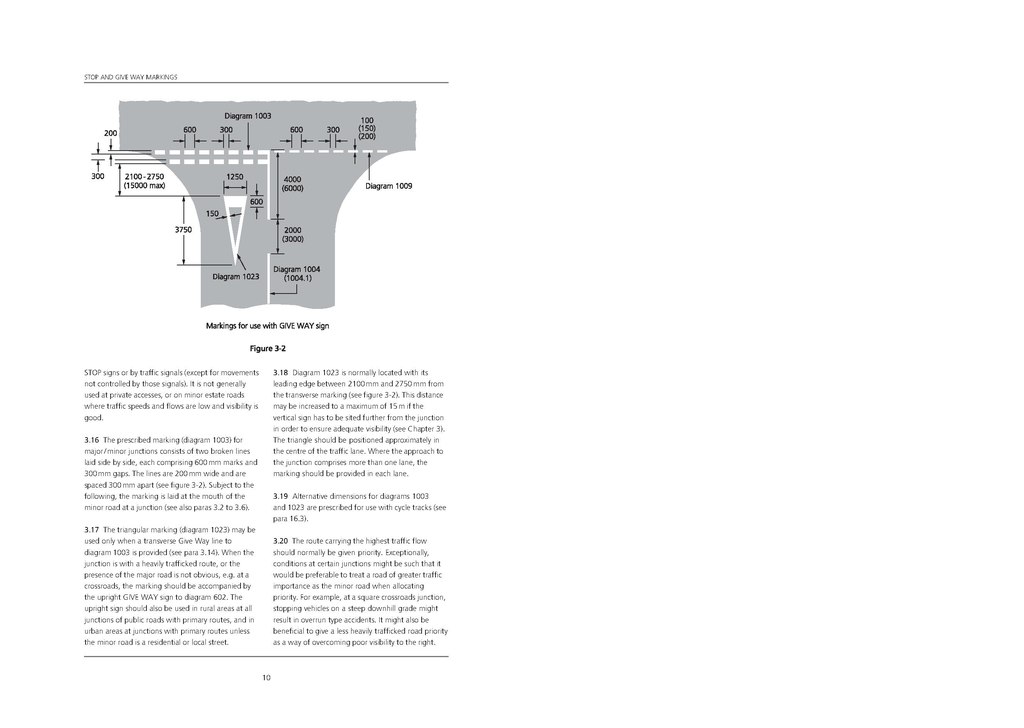STOP signs or by traffic signals (except for movements not controlled by those signals). It is not generally used at private accesses, or on minor estate roads where traffic speeds and flows are low and visibility is good.
3.16 The prescribed marking (diagram 1003) for major / minor junctions consists of two broken lines laid side by side, each comprising 600 mm marks and 300 mm gaps. The lines are 200 mm wide and are spaced 300 mm apart (see figure 3-2). Subject to the following, the marking is laid at the mouth of the minor road at a junction (see also paras 3.2 to 3.6).

3.17 The triangular marking (diagram 1023) may be used only when a transverse Give Way line to diagram 1003 is provided (see para 3.14). When the junction is with a heavily trafficked route, or the presence of the major road is not obvious, e.g. at a crossroads, the marking should be accompanied by the upright GIVE WAY sign to diagram 602. The upright sign should also be used in rural areas at all junctions of public roads with primary routes, and in urban areas at junctions with primary routes unless the minor road is a residential or local street.
3.18 Diagram 1023 is normally located with its leading edge between 2100 mm and 2750 mm from the transverse marking (see figure 3-2). This distance may be increased to a maximum of 15 m if the vertical sign has to be sited further from the junction in order to ensure adequate visibility (see Chapter 3). The triangle should be positioned approximately in the centre of the traffic lane. Where the approach to the junction comprises more than one lane, the marking should be provided in each lane.
3.19 Alternative dimensions for diagrams 1003 and 1023 are prescribed for use with cycle tracks (see para 16.3).
3.20 The route carrying the highest traffic flow should normally be given priority. Exceptionally, conditions at certain junctions might be such that it would be preferable to treat a road of greater traffic importance as the minor road when allocating priority. For example, at a square crossroads junction, stopping vehicles on a steep downhill grade might result in overrun type accidents. It might also be beneficial to give a less heavily trafficked road priority as a way of overcoming poor visibility to the right.
10
